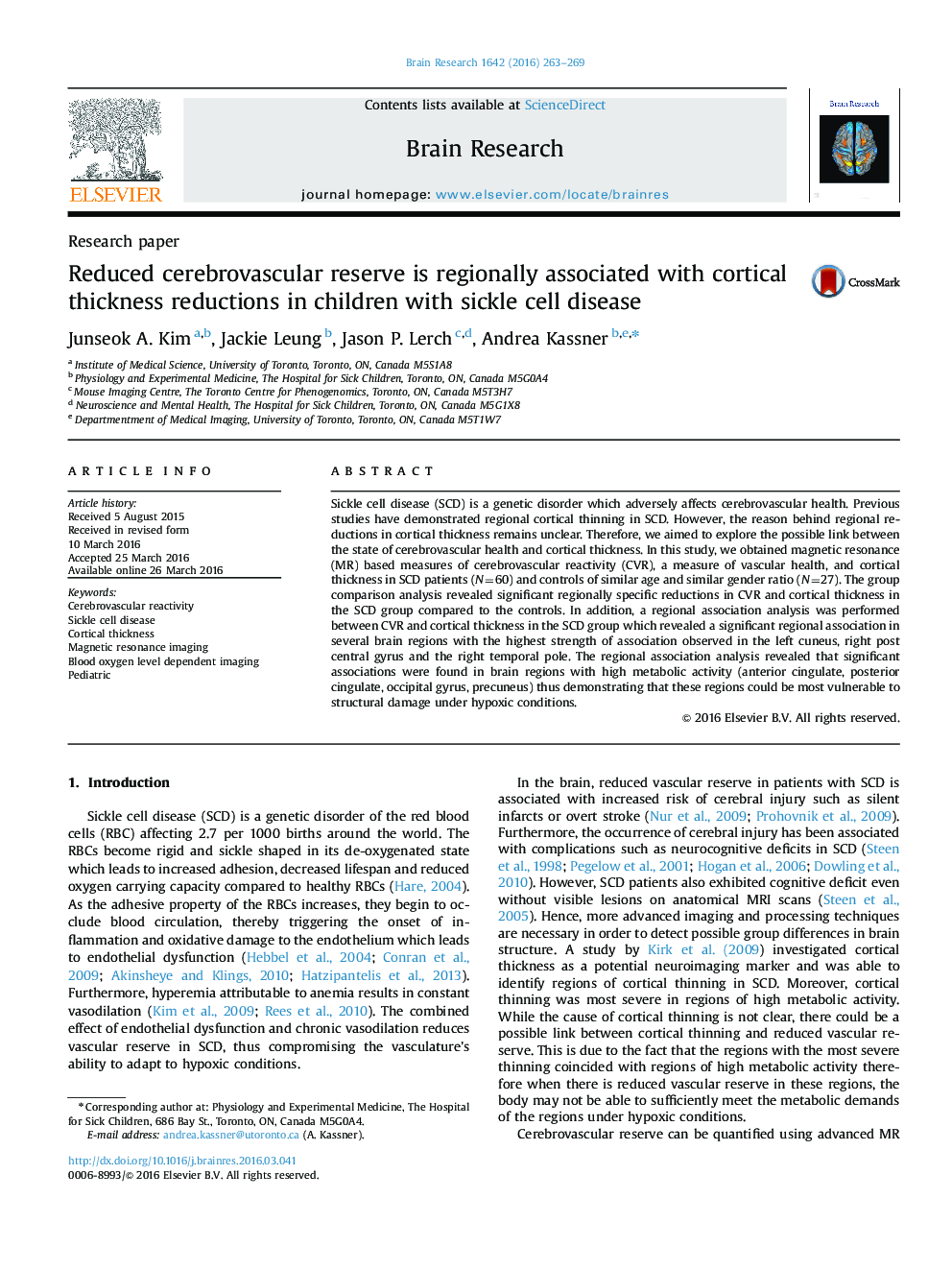| کد مقاله | کد نشریه | سال انتشار | مقاله انگلیسی | نسخه تمام متن |
|---|---|---|---|---|
| 4323593 | 1613800 | 2016 | 7 صفحه PDF | دانلود رایگان |
• Regional reduction in cortical thickness observed in sickle cell disease (SCD).
• Regional reduction in cerebrovascular reactivity (CVR) observed in SCD.
• Regional reductions in cortical thickness associated with regional CVR reductions.
• Highest strength of correlation coincided with regions of high metabolic activity.
Sickle cell disease (SCD) is a genetic disorder which adversely affects cerebrovascular health. Previous studies have demonstrated regional cortical thinning in SCD. However, the reason behind regional reductions in cortical thickness remains unclear. Therefore, we aimed to explore the possible link between the state of cerebrovascular health and cortical thickness. In this study, we obtained magnetic resonance (MR) based measures of cerebrovascular reactivity (CVR), a measure of vascular health, and cortical thickness in SCD patients (N=60) and controls of similar age and similar gender ratio (N=27). The group comparison analysis revealed significant regionally specific reductions in CVR and cortical thickness in the SCD group compared to the controls. In addition, a regional association analysis was performed between CVR and cortical thickness in the SCD group which revealed a significant regional association in several brain regions with the highest strength of association observed in the left cuneus, right post central gyrus and the right temporal pole. The regional association analysis revealed that significant associations were found in brain regions with high metabolic activity (anterior cingulate, posterior cingulate, occipital gyrus, precuneus) thus demonstrating that these regions could be most vulnerable to structural damage under hypoxic conditions.
Journal: Brain Research - Volume 1642, 1 July 2016, Pages 263–269
